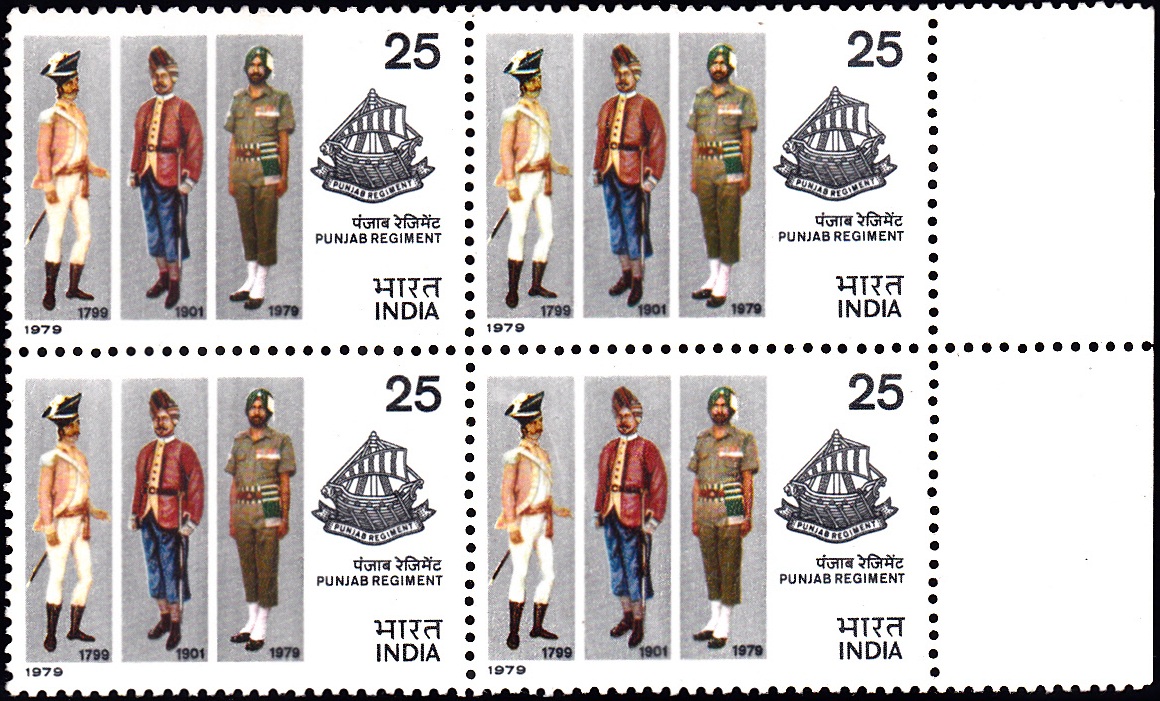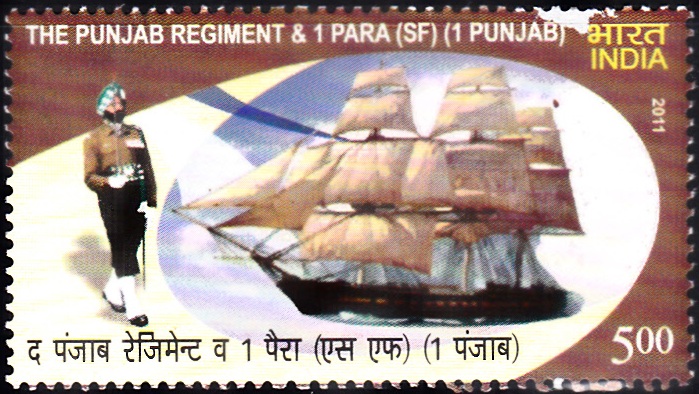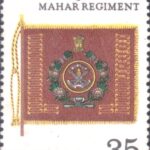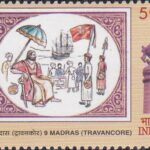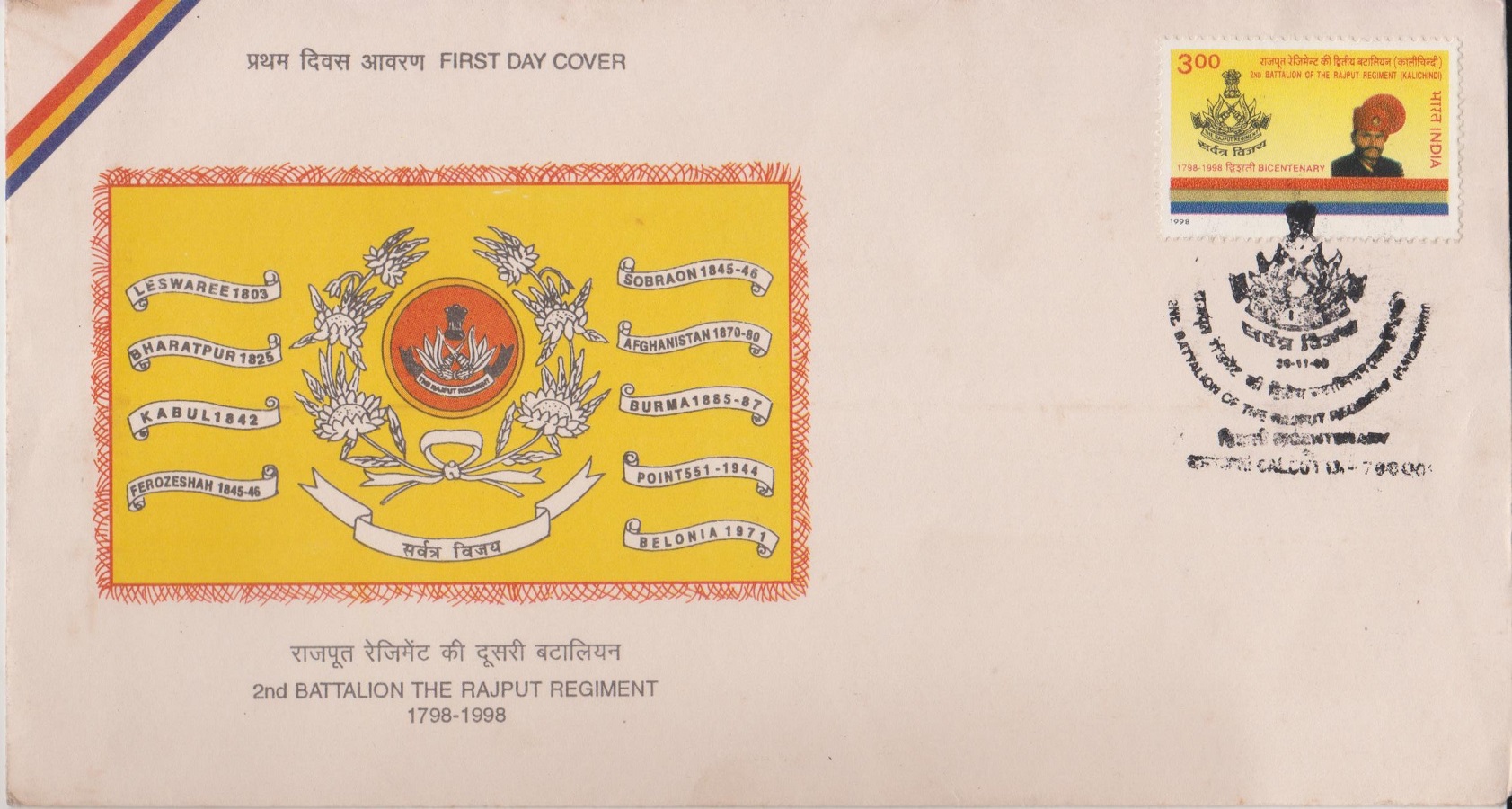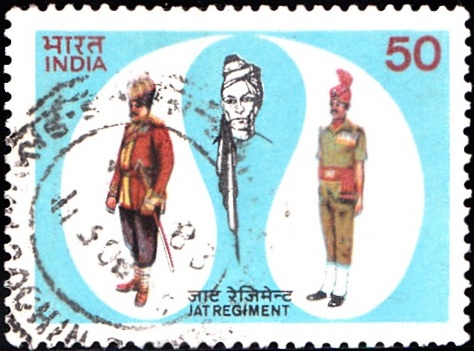
The Madras Regiment
A commemorative postage stamp on the 250 years of selfless sacrifice and courage of the Madras Regiment (1758-2008) :
 Issued by India
Issued by India
Issued on May 28, 2009
Issued for : India Post is proud to issue a commemorative postage stamp on MADRAS REGIMENT.
Credits :
Stamp & FDC : Suresh Kumar
Cancellation : Alka Sharma
Type : Stamp, Mint Condition
Colour : Multi colour
Denomination : 500 Paise
Stamps Printed : 0.4 Million
Printing Process : Wet Offset
Printer : Security Printing Press, Hyderabad
About :
- After the siege of Fort St George at Madras by the French in 1758, The East India Company organized their sepoy levies into companies and subsequently to 52 Battalions by 1826. In a significant historic event Madras Native Infantry spearheaded the storming of the Seringapatam Fort in 1799. On 23 September 1803 the Madras Native Infantry, defeated the Peshawa Army during the Second Mahratta War in the Battle of Assaye. In recognition of their services, an insignia of an Assaye Elephant was awarded to the Madras Native Infantry, which later replaced the crown in the crest adopted by the Regiment. During the period 1870-1903, as part of the overall reduction, Madras Native Infantry was reduced by 20 battalions and another 17 were converted into units of the Punjab Regt and Gurkha Rifles.
- During the First World War, Madras Regiment was increased to 88 Infantry battalions. These were deployed in Mesopotamia, Iraq, Persia, East Africa and also within the sub-continent in the North West Frontier. During the Second World War, all Territorial battalions were embodied for active service. 1 MADRAS and 4 MADRAS saw action in Burma (1942-45) and Indonesia (1945-46). The First Mysore Infantry (now 18 MADRAS) was involved in an intense action against the Japanese in Malaya. First Travancore (now 9 MADRAS) moved to Hong Kong as part of the occupation forces and 2nd Travancore (now 16 MADRAS) was deployed in the Middle East as part of the Persia and Iraq Force. The Madras Regimental Centre was re-raised as the Recruits Training Centre of the 3rd Madras Regiment on 19 July 1942 at Madukarai near Coimbatore and Colours were presented on 23 September 1942 i.e. on the 139th Anniversary of Battle of Assaye. The Training Centre was moved the Wellington (Shrinagesh Barracks) in February 1947 by Late General Sir Archebald NYE, GLIE, KCB, MC the Governor of Madras.
- The period after Independence saw consolidation and development, leading the Regiment towards emerging as a matured and cohesive outfit. 1, 2 and 4 MADRAS were actively engaged in the 1947 Jammu and Kashmir Operations and earned Battle Honour of Tithwal and Punch. In 1951, State Forces of Travancore, Cochin and Mysore were integrated with the Regiment and were designated as 9 MADRAS, 16 MADRAS, 17 MADRAS and 18 MADRAS. On 25 April 1962, 4 MADRAS sailed overseas as part of the Indian Contingent on the United Nations Peace Keeping Mission in Congo. 2 MADRAS and 26 MADRAS were later deployed in Lebanon (2002) and Congo (2007). Battalions of the Regiment saw intense action in the Indo-Pak conflict 1965 and 4 MADRAS (WLI) and 1 MADRAS were conferred with Battle Honour of Maharajke and Kalidhar. In 1971 war 6th and 16 MADRAS earned Battle Honour of Basantar, while 26 MADRAS was awarded Battle Honour of Siramani in East Pakistan, Five battalions of our Regiment, have held the fort at the World’s Highest Battlefield at Siachen Glacier. During ‘OP PAWAN‘ eight battalions of the Regiment were deployed in Sri Lanka. The Regiment has been conferred with 44 Battle Honours and 10 Theatre Honours till date.
- Text : Based on material supplied by the proponent.
Subscribe
Login
0 Comments
Oldest


